
What Every Construction Company Must Know Before Picking a Crane Transport Carrier
Every construction project carries risk. Among the most critical and costly risks is trusting the wrong carrier to deliver or relocate their crane. Whether you’re bringing in a crawler, mobile, or tower crane to your job site, the decision of which freight trucking carrier handles that transport can make or break your schedule, budget, and reputation.
In this guide, you’ll find what matters most when selecting a crane transport carrier, what questions to ask, what pitfalls to avoid, and why Buchanan Hauling and Rigging, Inc. is uniquely positioned to deliver value for construction crews and contractors.
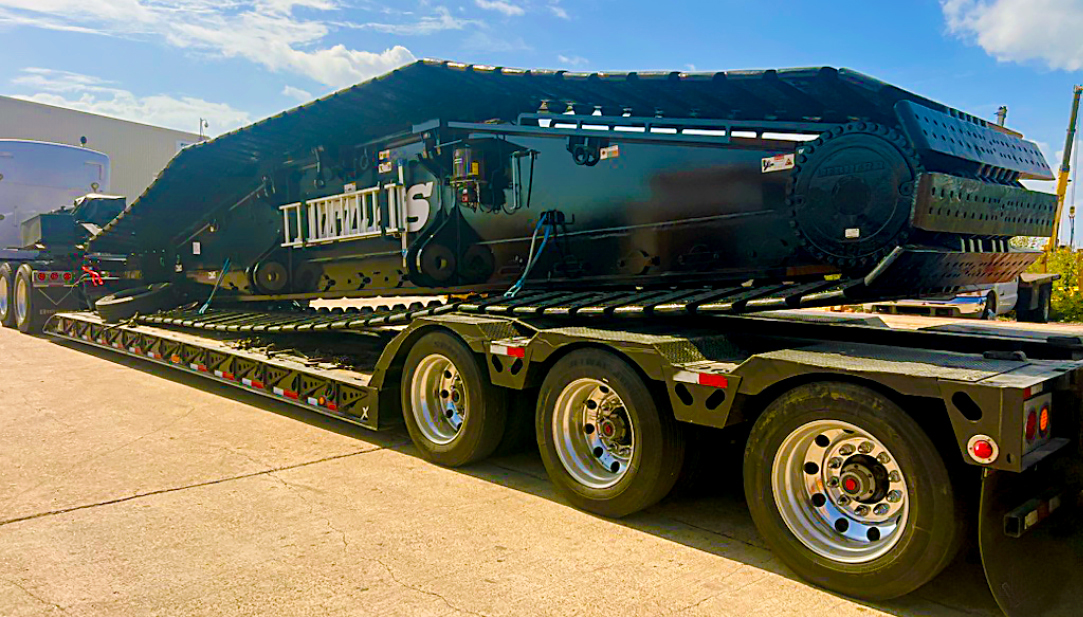
Why Crane Transport Is Not “Just Another Load”
Cranes are among the most complex heavy equipment to move. Their dimensions, weight distribution, reach, and necessity for safe disassembly and rigging make even short-distance moves high-stakes. Here are key challenges:
Oversized and overweight constraints
Most cranes exceed standard width, height, or weight limits, so they require special permits, engineered route plans, and compliance with state rules.
Structural sensitivity
Cranes have components like booms, counterweights, outrigger frames, and cab jibs that are sensitive to vibration, torque, or shock during transport.
Load geometry and balance
Moving a crawler crane or tower segment requires careful balancing, securing, and potentially disassembly or partial breakdown.
Complex routing
Bridges, low overpasses, power lines, and tight turns all demand advanced surveying and route engineering.
Jobsite delivery constraints
The final leg may require specialized handling to place the crane exactly where it’s needed (e.g., within tight footprints).
Insurance, liability, compliance
Mistakes in permitting, escorting, or securing a crane can lead to regulatory fines or damage claims on top of likely delays.
Given those challenges, a construction firm must treat crane transport as a mission-critical logistics decision, not a commodity bid.
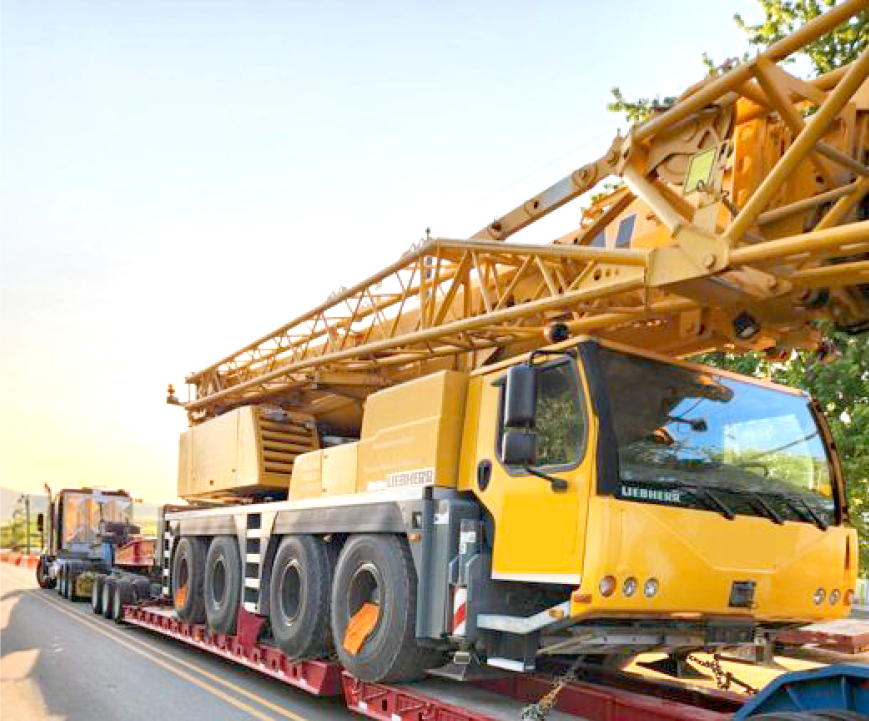
What Construction Teams Should Expect from a Crane Carrier
When vetting carriers, here are vital criteria:
Proven crane transport experience
Don’t settle for a general heavy-haul company that just “claims” oversize capacity. Ask for specific examples of mobile, crawler, and tower crane moves. Request references.
Rigging and lift coordination
The ideal carrier offers rigging, crane erection/lift assistance, and disassembly services, not just trucking. That ensures continuity and accountability.
Route engineering and permitting expertise
The carrier should handle all permitting, route studies, and escort vehicle coordination. You want them to take full responsibility, not pass back extra burdens to you.
Modern equipment and adaptable trailers
Removable gooseneck (RGN), multi-axle trailers, lowboys, extendable platforms, spread axle systems, all help adapt to different crane geometries.
Also, air-ride suspension, deck reinforcements, and securement systems must be available.
Safety, compliance, and contracting diligence
Ensure the carrier has exemplary safety metrics (e.g., low claim ratio) and robust liability coverage. They should comply with DOT, state, and local oversize load regulations.
Transparent planning and communication
You should expect proactive updates, GPS tracking, and clear escalation paths when obstacles arise. Unexpected detours or delays must be flagged early.
Cost transparency and risk allocation
The carrier should provide line-by-line cost breakdowns: permits, escorts, scheduling, disassembly, reassembly, demurrage, etc. Avoid lump-sum quotes with hidden add-ons.
Responsiveness and flexibility
Crane moves often confront last-minute delays like weather, jobsite changes, or utility concerns. The carrier should offer flexibility, backup plans, and the ability to pivot.
Strong reputation in heavy haul / crane projects
Look for carriers ranked among the top heavy haul or crane-rigging firms like Buchanan Hauling and Rigging, Inc.
If a carrier stumbles on one of these, they may jeopardize your project.
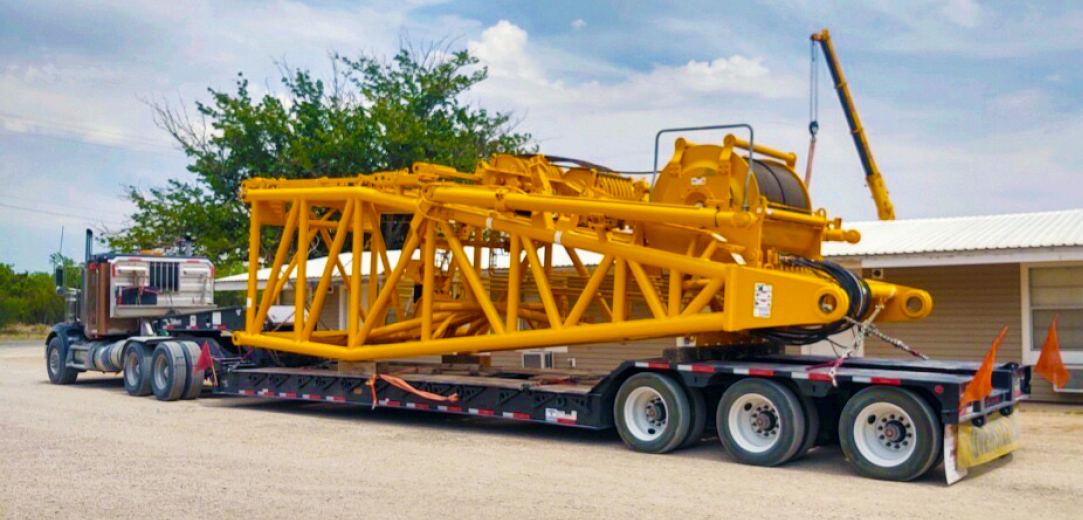
Mobile, Tower, Crawler Cranes: Differences That Matter
Because each crane type brings its own transport profile, your choice of carrier must reflect that nuance.
Mobile Cranes
These are often already truck-mounted machines. But depending on mast length, ballast, or outriggers, a carrier may need to remove ballast or boom sections. The carrier should be adept at “crane truck transport.”
Crawler Cranes
With tracks, long booms, substructure, and counterweights, crawler cranes often require full disassembly into modules. The transporter must engineer modular loads and ensure precise reassembly at the destination.
Tower Cranes
Tower crane sections, jib segments, counterweights, and mast frames demand multi-leg trailer strategies. The carrier must know how to stage components, load incrementally, and deliver to tight jobsite footprints. If you take away nothing else, remember these key factors when it comes to tower crane transport:




A capable crane carrier will have all three types in their portfolio.
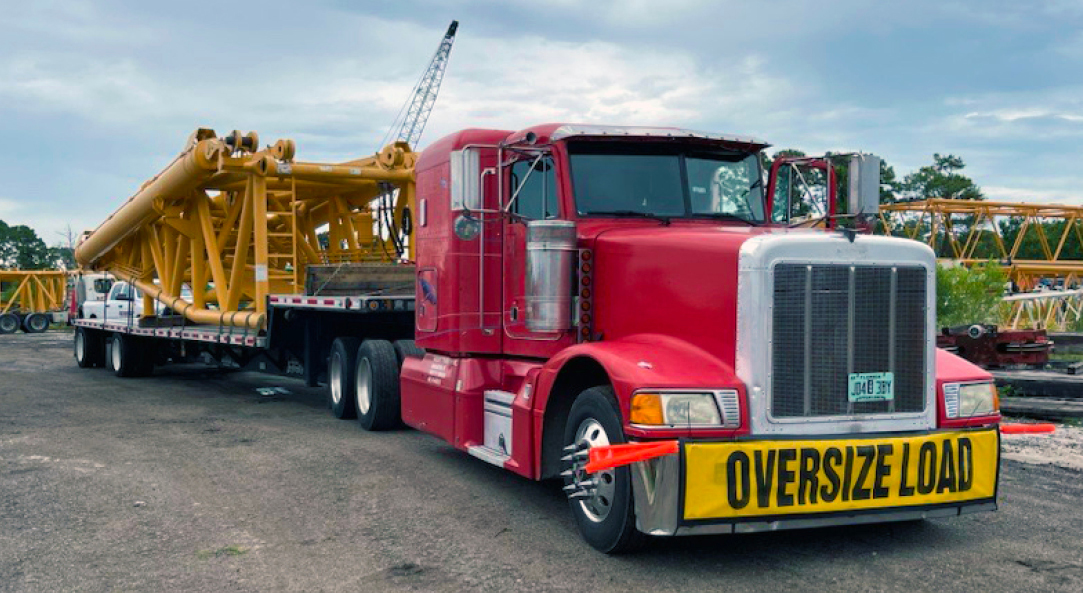
Why Buchanan Hauling and Rigging, Inc. Stands Out
When you look for a partner who can walk all those technical tightropes and still make your life easier, Buchanan Hauling has compelling advantages. Below is how Buchanan aligns with what construction teams should demand.
1. Balanced service portfolio across heavy haul, specialized freight, and 3PL logistics
Buchanan doesn’t just claim heavy haul; we operate real trucking assets, hire our own Company Drivers and Owner Operators, and have a logistics arm. Because we combine our asset-based hauling and utilize an internal logistics team, or bring in our sister brokerage company, you benefit from both control and flexibility.
2. Experience with heavy, oversize, and specialized freight
Buchanan has the infrastructure in place to support crane transport with our heavy haul division. Visit the Our Services page.
3. Safety and compliance culture
Buchanan promotes “strict safety standards” and regulatory compliance as central pillars of our operation. We also emphasize professionalism and proactive risk management in dispatch and permit planning.
4. Customer-first mindset and communication
We highlight 24/7 dispatch, real-time tracking, and diverse freight handling for our customers. Be sure to view our blog resources (e.g., “Selecting the Best Logistics Provider”) to stay informed and see that we think in terms of helping customers navigate complex freight decisions.
5. Geographic reach and scalability
Buchanan operates nationwide, maintaining multiple terminal locations. That means we can support crane moves in many regions.
6. Buchanan’s focus on honesty and integrity is a cornerstone value in how we do business.
Given all this, it is clear that Buchanan has the infrastructure, reputation, and trustworthiness to earn your trust.
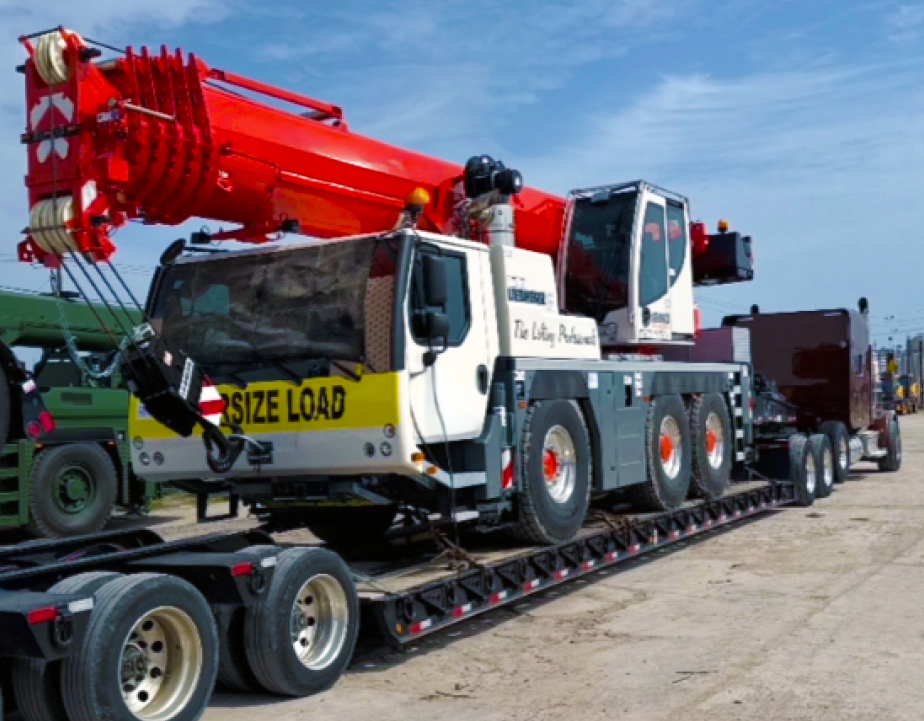
How Companies Should Vet Any Crane Transport Carrier Near Them in Practice
Here’s a simple, stage-by-stage checklist your procurement or operations team can use:
- Initial screening
Ask for a portfolio of crane moves (mobile, tower, crawler). Request metrics: on-time delivery rate, claim rate, accident history. Confirm their operating authority, insurance, and bonding. - Technical review
Present your crane’s technical specs (weight, dimensions, modules). Ask the carrier to propose a load plan and trailer options. Request a sample route analysis and permit strategy. - Cost and risk evaluation
Compare line-by-line cost components (permits, escorts, demurrage). Ask how they allocate cost overruns. Review their dispute or damage claim procedures. - Site logistics coordination
Confirm their role in final placement. Ensure they understand your site constraints (turns, soil, clearances). Get a timeline showing lift, placement, and contingency plans. - Contract and service agreement
Clarify responsibilities (carrier vs shipper) in writing. Establish communication protocols (escalation, updates). Define acceptance criteria (inspection, damage threshold). - Post-move review
After delivery, evaluate performance vs plan (timing, damage, responsiveness). Record lessons learned; you may ask for continuous improvement from the carrier.
Buchanan passes all these and then some.
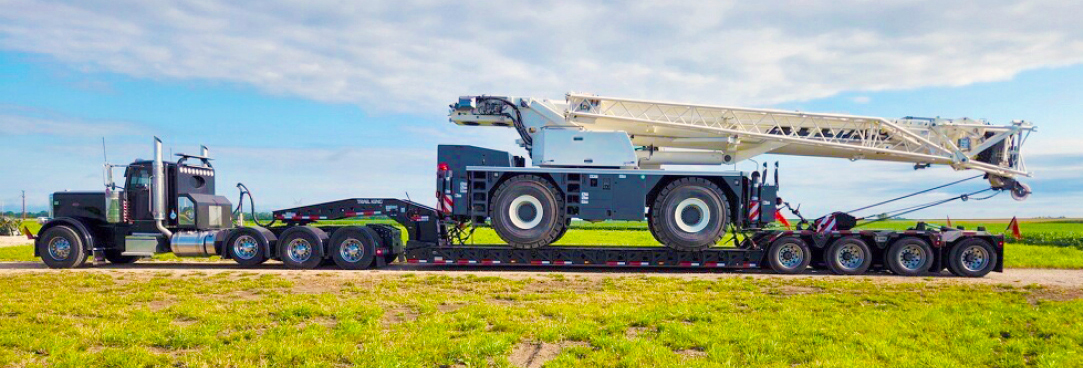
Sample Use Case: Transporting a Tower Crane to a Tight Urban Site
Imagine a developer is erecting a high-rise downtown. The tower crane’s components must arrive in phases: mast base, jib sections, counterweights, and operator cab. The jobsite is dense, with curb constraints, overhead utilities, and limited laydown zones.
A capable carrier (like Buchanan) would:
- Break the load into modules that match trailer capabilities
- Route through allowable streets, avoiding tight turns or low clearances
- Secure utility permits or cuts if needed
- Employ escort vehicles or police if required
- Stage deliveries so modules arrive in sequence and can be assembled
- Coordinate with the erection crane crew to minimize delays
If delays arise (e.g., a low-bridge closure), the carrier would proactively re-route or reschedule and communicate immediately. That level of orchestration separates a generic heavy-haul carrier from a trusted crane carrier.
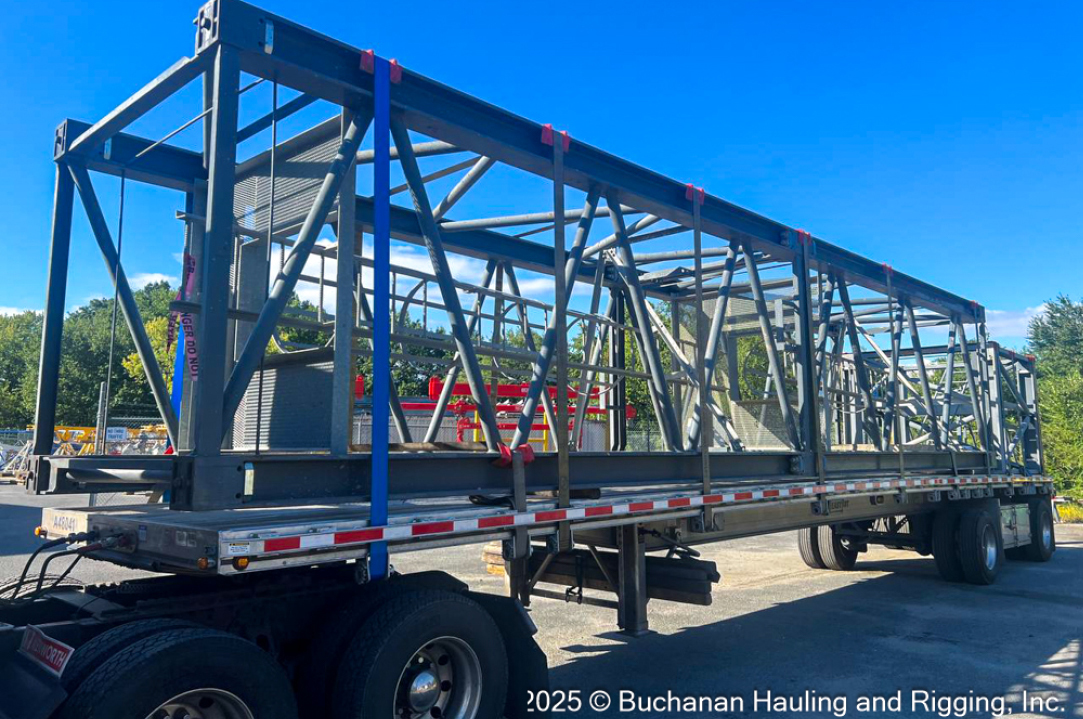
Why the Right Carrier Choice Saves Time, Money, and Headache
1. Schedule certainty
A botched move can hold up your entire baseline schedule, delaying critical lift cycles.
2. Damage avoidance
The wrong carrier or strap failure can bend booms, damage structural elements, or cause scrapping costs.
3. Regulatory risk
Improper permitting or route violations can invite fines, load holds, or mandated re-moves.
4. Cost overruns
Hidden charges (escorts, detours, reloading) inflate budgets.
5. Reputation and liability
If your crane causes damage en route, you may bear costs or liability; choosing a trusted carrier helps mitigate that risk.
By contrast, when you partner with a carrier like Buchanan who understands crane transport—not just trucking—you remove many of those variables from your project’s risk matrix.
What's Your Next Move?
If you’re planning a crane move, whether mobile, crawler, or tower, don’t leave it to chance. Let Buchanan Hauling and Rigging handle the complex logistics so your construction team can focus on lifting, not troubleshooting. Click the button below to start the communication process and get a rate quote.
Resources
Check out our company overview ebrochures:


